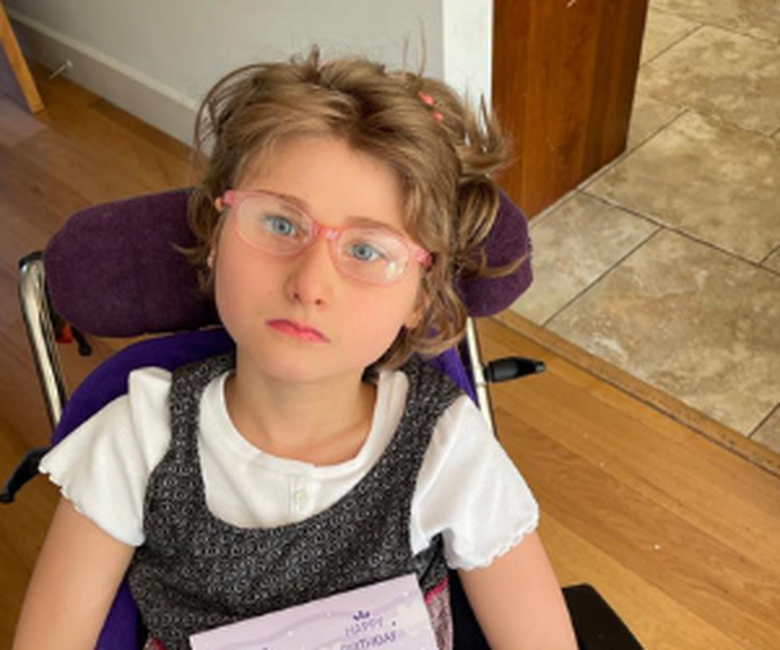Sienna
At DSUK, we’re here to support all families living with Dravet Syndrome. Although around 85% of individuals with a Dravet diagnosis have a SCN1A gene mutation, sometimes the underlying cause can be much more complicated, as Sienna's story shows, shared with thanks by her Mum, Kay.
Sienna’s Dravet journey started early - she had her first seizure in October 2011 at just over three months old. "We did not know what it was”, says Kay. “It was brief but scary”.
What happened next will be familiar to many families. “There were hospital investigations and many invasive tests”, adds Kay. “After three traumatic months, we received the results of a genetic test. We were told Sienna had Dravet Syndrome - that she would need 24-hour care for the rest of her life, she was unlikely to learn to walk or talk”.
But Sienna’s genetic test results were unusual, even by Dravet standards. It revealed changes not only in SCN1A but also SCN2A and SCN3A, two other sodium channel genes: “These genes were all deleted. The hospital told us that did not know any other children with this deletion and, as Sienna was seizing in my husband’s arms they predicted her life expectancy to be just two years”.
Dealing with this devastating news, the daily challenges of living with Sienna’s condition (she continued to have very severe clusters of seizures that would last up to 24 hours) and also taking care of her siblings (then aged 5 and 7 years) was a difficult time for the family.
Although the genetic test confirmed Sienna’s condition had arisen spontaneously (‘de novo’ rather than inherited, as is the case in around 90% of Dravet diagnoses), Kay carried feelings of guilt for many years. “It weighed me down”, she admits.
A turning point came when Kay and her husband found DSUK and joined our closed Facebook support group: “Everyone was so welcoming and kind. Although Sienna was different to the typical Dravet phenotype, the group has been to be a lifeline for us.”

A turning point came when Kay and her husband found DSUK and joined our closed Facebook support group: “Everyone was so welcoming and kind. Although Sienna was different to the typical Dravet phenotype, the group has been to be a lifeline for us.”
Having found emotional and practical support among our Dravet community, Kay continued her search to better understand Sienna’s specific genetic condition. “Lots of frantic research and many counselling sessions later, I emerged from the darkness”, she tells us.
Today, she has come to terms with Sienna’s condition. “I have a better balance now with my life and am truly happy. Research and hope for the future is big part of that happiness as I know that scientists are doing their utmost to try to find cures”.
Sienna is now 9 years old - and she is currently enjoying the longest seizure-free streak of her life. “Over 40 days and she’s in the best health she has ever been in”, says Kay.
Dravet Syndrome is a spectrum disorder - while not all children with Dravet are unable to walk or talk, this did turn out to be the case for Sienna. “For us, that doesn’t matter”, says Kay. “Her comfort is our main priority and that she knows she is loved and cared for.
She is very precious to a lot of people and has touched many hearts, while bringing many amazing people into our lives that we would not have met otherwise. Her favourite thing is intensive interaction and she still looks into our eyes and now gives the most genuine smiles. She has such a gentle nature and simple comforts make her happy.”
Thank you Kay and all your family for sharing your story and being part of our Dravet community.
